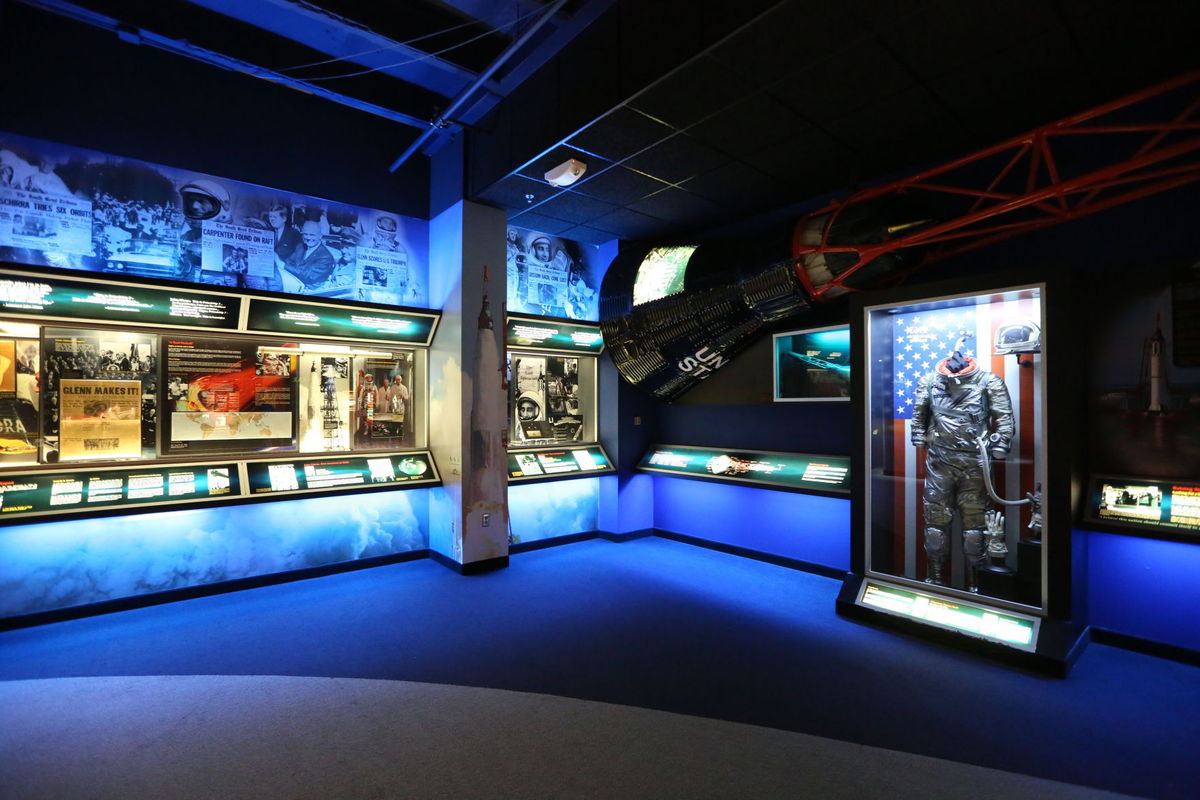By Adam Stewart
The Hutchinson News, Kan.
WWR Article Summary (tl;dr) The legacy of the real people depicted in “Hidden Figures” is alive and well at the Cosmosphere in Hutchinson, including its collection of Mercury-program artifacts and, more importantly, its science, technology, engineering and math (STEM) programs for girls.
The Hutchinson News, Kan.
“Hidden Figures,” a film about the true story of African-American women’s integral contributions to the American space program, has been receiving rave reviews.
The film has a 93 percent rating on review aggregator Rotten Tomatoes and has received Academy Award nominations for Best Picture, Best Actress in a Supporting Role (for Octavia Spencer) and Best Adapted Screenplay. As of Jan. 31, its worldwide box-office earnings were nearly $110 million.
The legacy of the real people depicted in “Hidden Figures” is alive and well at the Cosmosphere in Hutchinson, including its collection of Mercury-program artifacts and, more importantly, its science, technology, engineering and math (STEM) programs for girls.
Tracey Tomme, vice president for education, said Cosmosphere space-camp attendance is about 75 percent by white males, which mirrors the makeup of college engineering programs and STEM industries.
Tomme said girls are just as interested as boys in science and math through about third grade, but a divide grows suddenly after that. Industries want to recruit more women in STEM fields, she said, but the pipeline to get girls from elementary school to STEM careers is broken.
“We need to help fix that pipeline, and the time to do that is in fourth grade,” she said.
To that end, the Cosmosphere started offering a number of girls-only camps in 2014, and attendance by girls has increased from 211 in 2014 to 253 in 2016, a 20 percent increase. Tomme said the content of the camps — Mars Academy for sixth- and seventh-graders and Space 101 for seventh- and eighth-graders — isn’t different from the coed versions.
“I would say it’s working,” Tomme said. “It takes a targeted effort. It doesn’t just happen.”
Barbara Anthony-Twarog, a professor of astronomy and astrophysics at the University of Kansas, said she has seen some tremendous strides since she was growing up, watching the Mercury program, imagining being part of the space program.
“Pretty shortly after I thought that would be a pretty cool way to live my life, I discovered that it was not an option for a girl,” Anthony-Twarog wrote in an email to The News. “Even by the time I graduated from college, there were no ways to use a physics degree in the military or for me to become an astronaut.”
Fortunately, by then she had decided she was more interested in studying the stars than traveling to space, and she doesn’t regret how it turned out.
She said that by the time she was applying to graduate school, most formal barriers to women pursuing careers in science and technology were gone, but attitudes and expectations were still in place.
“Even kindly meant, expecting less of women can set them up for eventual failure,” Anthony-Twarog said, and those attitudes aren’t always kindly meant, either. “Unconscious bias is a much wider problem, in my opinion.”
She said she was the only female faculty member for physics and astronomy at KU for more than a decade when she started, and there were few in engineering and math. The upside, she said, was that they all knew and supported one another. Now there are too many to all know one another well, but that is a trade-off she is happy to make.
“Diversity really does make a big and positive difference for everyone in a discipline,” she said.
Anthony-Twarog echoed Tomme’s statement that raising women’s participation in STEM fields has to start in the pre-teen years.
“It’s hard to shift the plans of young women near 20,” she said. “I know both men and women who are great scientists, who have had wonderful and full family lives and played constructive roles in their communities. We need to move to a point where women can be seen as potentially successful in many roles in their lives.”
Kayla LaFrance, a flight controller for the International Space Station at Johnson Space Center in Houston — and a Cosmosphere space camp alumna — said it’s important for girls to know they can be involved in science without giving up other interests.
“Trust in your heart and follow your passion,” she said.
LaFrance said she was fortunate to grow up with a grandfather who accepted her interests.
“He let me just be that tomboy,” she said.
Mercury artifacts
The Cosmosphere’s extensive collection includes numerous artifacts related to the Mercury program. Among those are:
— An authentic Mercury-Redstone launch vehicle, outside the Cosmosphere.
— Astronaut Wally Schirra’s flown suit (one of only six flown Mercury program suits) from the Sigma 7 mission. The gloves include small lights in the fingertips for better visibility of controls, Collections Manager Shannon Whetzel said.
— A Mercury-Atlas engine. Mercury-Atlas rockets powered four of the Mercury missions — all of the orbital missions.
— A flight-ready backup of the launch escape tower used in the Mercury program.
— A wind-tunnel model of a Mercury spacecraft used in engineering and testing for the program.
— A Mercury program mission control panel.
— Numerous items found when Gus Grissom’s Liberty Bell 7 was recovered from the Atlantic Ocean in 1999, including dimes and dollar bills.
— Liberty Bell 7 itself, which currently is on loan to the Children’s Museum of Indianapolis. The spacecraft and its sinking actually appear in the film.














































































































































































































































































































































































